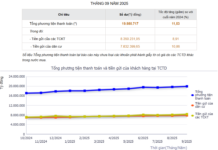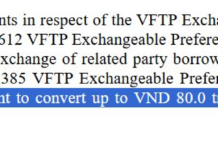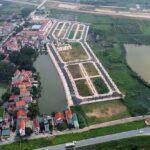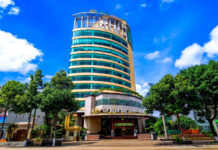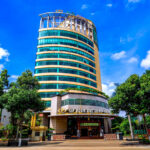Dr. Tran Xuan Luong, Deputy Director of the Vietnam Real Estate Market Research and Evaluation Institute, asserts that land costs account for 30-50% of input expenses. Consequently, rising land prices could further elevate the overall real estate market prices.
Additionally, herd mentality and the FOMO (Fear of Missing Out) effect are significantly influencing Vietnam’s real estate market. The new land price list may lead citizens and investors to believe prices will continue rising, thereby fueling speculation and potentially causing artificial market bubbles.
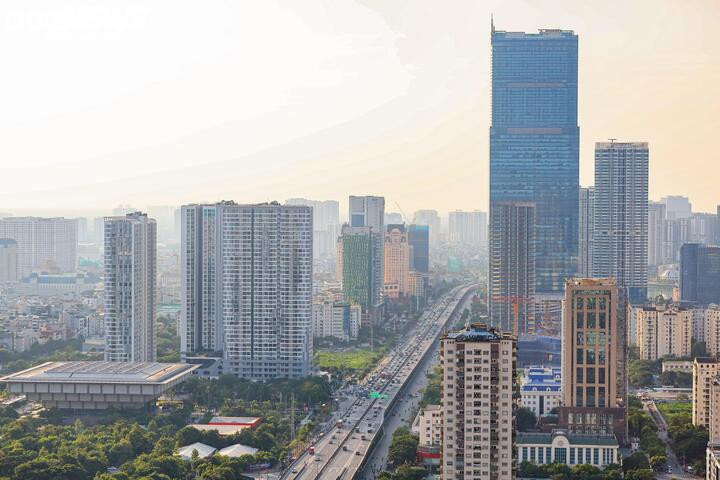
Will Hanoi’s new land price list prevent the real estate market from cooling down? (Illustrative image: Minh Duc)
The Vietnam Real Estate Association further analyzes that increased land prices will impact production costs, affecting the affordability of housing for genuine buyers. For commercial housing, higher land prices could compromise project feasibility, leading to further price increases.
Rising land costs result in higher housing expenses, diminishing investment appeal, particularly for projects in suburban areas. This reduction in investment projects could hinder city development plans aimed at population decentralization. Consequently, the housing supply may decrease, complicating social welfare stability in the region.
Moreover, the real estate market is in a fragile recovery phase, with many businesses restructuring and limited capital. Increasing land prices at this juncture could impose additional burdens, slowing market recovery.
According to Lawyer Nguyen Van Dinh, higher prices can transform land into a development resource, increasing government revenue and providing fairer compensation for land reclamation. However, this also increases financial burdens on citizens through land use fees, income taxes from land use rights transfers, and registration fees.

Businesses and citizens face additional financial burdens. (Photo: Minh Duc)
Specifically, higher land prices increase associated costs for citizens, such as first-time land registry fees, land use purpose changes, annual land rental payments, land use taxes, registration fees, and income taxes from land use rights transfers—all calculated based on land prices.
If land prices double, citizens’ payments for land use, taxes, and fees will also double, significantly impacting this large demographic group.
From a business perspective, Mr. Pham Duc Toan, CEO of EZ Real Estate (EZ Property), explains that historically, land use payments were relatively stable. For instance, in the Northern Delta provinces, the cost for 1 hectare of land was around 10 billion VND. However, this figure now fluctuates daily, making it difficult for businesses to predict actual costs.
“Some projects spanning several years started in 2018-2019 with land prices around 21-22 million VND/m². Now, after adjustments, prices can reach 49-50 million VND/m². This disparity creates significant challenges for businesses,” Mr. Toan illustrates.
Furthermore, projects delayed due to procedural issues or land clearance often face recalculated land use fees, sometimes amounting to hundreds of billions of VND. This inconsistency in pricing increases financial pressure on businesses.
Mr. Le Hoang Chau, Chairman of the Ho Chi Minh City Real Estate Association, cited an example of a business renting a 11,000 m² warehouse in District 4 (old) in Ho Chi Minh City, paying 3.3 billion VND annually in 2022. By 2023, after the city adjusted rental calculation coefficients, the fee increased to 7.7 billion VND. By early 2025, with the new land price list, the cost surged to over 21 billion VND annually, tripling from the previous year and septupling from 2022.
This reality significantly increases businesses’ fixed costs, directly affecting cash flow, production plans, and market competitiveness.
He added that over the past three years, Ho Chi Minh City has adjusted land prices three times, forcing businesses to face substantial changes in land-related financial obligations, with higher taxes and fees each time.
“This places considerable financial strain on businesses. While the city may increase its budget over the next five years due to higher land revenues, businesses and investors may eventually relocate elsewhere,” Mr. Chau predicted.
The Hanoi People’s Council approved a resolution establishing a new land price list, effective from January 1, 2026. Land prices are categorized into 17 zones based on administrative unit rearrangements, rather than by districts and wards as previously done.
The highest price is approximately 702 million VND/m², with many suburban areas seeing increases of 24-26% compared to the current price list.
Not only Hanoi, but many localities nationwide are entering a similar “land price increase cycle” during 2024-2025.
In Ho Chi Minh City, the adjusted land price list has increased by 4 to 38 times, reaching a maximum of 687.2 million VND/m². Former Bac Giang also recorded an increase of about 2.4 times, with the highest land price at 120 million VND/m². Hai Phong saw increases of up to 373% compared to the old price list.
Hanoi Approves New Land Price List: Inner City Peaks at 702 Million VND/m², Substantial Fluctuations in Outskirts
The Hanoi People’s Council has approved a new land price table effective from January 1, 2026. Prime locations along central streets will see land prices set at 702 million VND per square meter. Suburban areas have experienced the most significant adjustments, with the highest increase recorded at approximately 26%.
Hanoi Offers Up to 24 Months’ Salary Support for Non-Permanent Staff Leaving During Two-Tier Government Implementation
Individuals working outside the official staffing quota at Party and State-assigned Associations at the city and district levels prior to July 1, 2025, who leave their positions due to the implementation of the two-tier government organizational model, will receive a one-time allowance. This allowance is capped at a maximum of 24 months of their current salary or remuneration.
Hanoi Explains Proposed 2-26% Increase in New Land Price List
Mrs. Ho Van Nga, Head of the Budget Department of the Hanoi People’s Council, stated that according to the new land price draft, only a few areas will see an increase of over 20%, while most will rise by 2-3%. For commercial and service land, many locations will increase by 7-8%, and agricultural land prices will remain largely unchanged.
Prioritizing Eligible Buyers for Social Housing: A Comprehensive Guide
Social housing stands as a pivotal initiative, addressing the fundamental need for stable living conditions among the workforce and low-income earners. Yet, its implementation remains fraught with persistent challenges, hindering its full potential impact.





